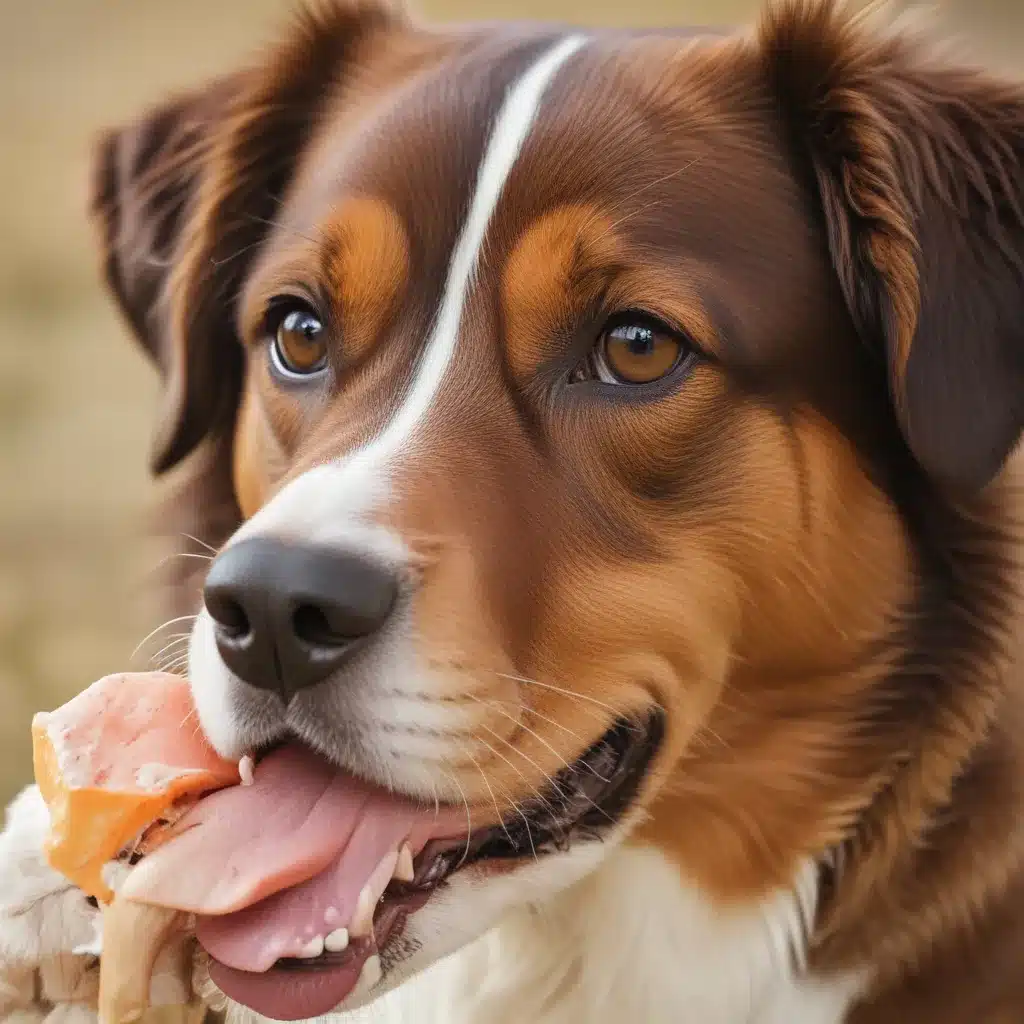
Chew On This: Understanding Your Dog’s Gnawing Tendencies
As a proud dog parent, I’ve had my fair share of battles with the dreaded chewing habit. It starts innocently enough – your pup examines the world around them, mouth first. But before you know it, your favorite pair of shoes has been turned into a slobbery, unrecognizable mess. Sound familiar?
Don’t worry, you’re not alone. Chewing is a completely normal behavior for our canine companions. In fact, it serves some pretty important purposes in a dog’s life. For young pups, it’s a way to relieve the discomfort of teething as they lose their baby teeth and grow in their adult set. And for older dogs, chewing helps keep their jaws strong and their teeth clean – just like how we humans need to brush and floss regularly.
But when that natural chewing instinct starts to target your precious belongings, it can quickly turn into a frustrating problem. That’s why today, I’m going to take a deep dive into the reasons behind dog chewing, and share some proven strategies to nip it in the bud. After all, a well-chewed house is no one’s idea of a good time.
Why Do Dogs Chew?
Okay, let’s start by getting to the root of the issue. Why do our furry friends feel the compulsive urge to chomp down on everything in sight? There are actually a few key reasons behind this common canine behavior:
Teething Troubles
As I mentioned, puppies tend to be the biggest chewers of the bunch. When those little puppy teeth start falling out to make way for their adult set, it can cause some serious discomfort. Chewing on things helps soothe their sore gums and alleviate the pain. Think of it like a dog’s version of a human baby gnawing on a teething ring.
Exploration and Boredom
Dogs are natural-born explorers, and they use their mouths to investigate the world around them. Shiny, interesting objects just beg to be tasted and examined. Plus, if your pup is left alone for long periods with nothing to do, chewing can be a way for them to entertain themselves and relieve boredom.
Stress and Anxiety
Some dogs turn to chewing as a coping mechanism when they’re feeling stressed or anxious. This could be due to separation anxiety when their favorite humans leave, or just general unease in certain situations. The repetitive motions of chewing can have a calming effect and help the dog self-soothe.
Nutritional Deficiencies
Believe it or not, a dog who isn’t getting the proper balance of nutrients in their diet may start chewing on non-food items in a misguided attempt to fulfill those missing vitamins and minerals. This is more common in dogs on calorie-restricted diets.
Recognizing the root cause of your dog’s chewing habit is the first step towards putting a stop to it. Once you know why they’re doing it, you can start implementing some effective solutions.
Chew On This: Stopping The Chewing Cycle
Okay, now that we’ve covered the reasons behind the chewing, let’s talk about how to put an end to it. Here are my top tips for breaking the habit for good:
Set Them Up For Success
The key is to make it as easy as possible for your pup to choose the right things to chew on. Start by thoroughly puppy-proofing your home – put away any tempting items like shoes, books, and remote controls that could become targets. Then fill their designated play area with an assortment of appropriate chew toys.
I Have Dogs has a great selection of durable, long-lasting chew toys perfect for satisfying those natural gnawing urges. Everything from tough rubber Kongs to edible bully sticks – the options are endless! Just be sure to supervise your dog when they’re playing to make sure they don’t accidentally swallow any small pieces.
Redirect, Reward, Repeat
Now, when you catch your dog starting to chew on something they shouldn’t, quickly redirect their attention to one of their approved toys. Praise and reward them with treats when they switch to the appropriate chew object. This positive reinforcement will help them learn what’s allowed versus what’s off-limits.
You can also try using deterrents like bitter apple sprays on furniture and other tempting surfaces. The unpleasant taste will discourage your pup from chewing in those areas. Just be sure to reapply the spray regularly to maintain its effectiveness.
Provide Plenty of Exercise
A tired dog is a good dog when it comes to curbing destructive chewing habits. Make sure your pup is getting enough physical and mental stimulation each day, through walks, playtime, training sessions, and puzzle toys. A bored, pent-up pooch is much more likely to start chomping on things out of sheer restlessness.
Manage Separation Anxiety
For some dogs, chewing can be a symptom of deeper emotional issues like separation anxiety. If your furry friend seems to only chew when left alone, try to address the underlying anxiety through techniques like gradual desensitization and counterconditioning. Consulting a certified animal behaviorist can be super helpful here.
Be Patient and Persistent
Breaking a chewing habit doesn’t happen overnight. It takes time, consistency, and a whole lot of patience on your part. But with the right approach, you can absolutely curb that undesirable behavior and save your belongings from becoming dog chew toys.
Remember, your dog isn’t trying to be “bad” or get back at you – they’re simply acting on instincts. With a little understanding and the right training, you can redirect that natural chewing drive into more positive outlets. Before you know it, your pup will be a model citizen, leaving your prized possessions unscathed.
So what are you waiting for? It’s time to take a bite out of that chewing problem once and for all! With the tips I’ve shared here, I have no doubt you and your furry friend will be on your way to a chew-free future.

